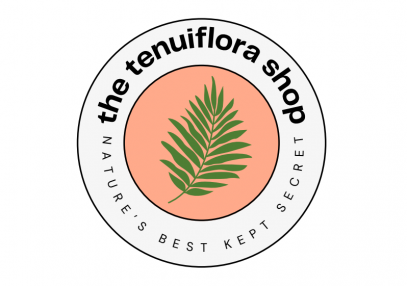

Image Source: Wikimedia Commons
As more creators shift towards eco-conscious practices, natural dyeing has surged in popularity. Among the most beloved and versatile botanicals for plant-based coloring is Mimosa Hostilis Root Bark (MHRB). Known for its rich tannin content and ability to produce earthy, beautiful tones, MHRB dye is quickly becoming a go-to in the textile and botanical crafting worlds.
This in-depth guide will show you why Mimosa Hostilis is valued by artisans, how to use MHRB powder for dyeing, and where to source the best material for your next creative project.
What is MHRB Dye and Why is it Special?
MHRB dye refers to the plant-based dye extracted from the inner root bark of the Mimosa tenuiflora tree (often also called Mimosa Hostilis). This botanical, native to regions of Mexico and Brazil, has long been valued in indigenous cultures for medicinal and cosmetic purposes. However, it has also quietly held a place in the natural dyeing world for centuries.
What makes MHRB dye so special is its incredibly high tannin content. Tannins act as natural mordants—substances that bind dye to fabric—making this powder ideal for prepping fibers or producing its own subtle yet stunning hues.
When properly extracted and applied, MHRB dye can yield shades ranging from warm browns and soft pinks to rich purples, depending on the mordant and method used.
Benefits of Using MHRB Dye
Choosing plant-based dyes like MHRB over synthetic alternatives offers numerous benefits:
- Eco-Friendly: MHRB is biodegradable and sustainable when harvested ethically.
- Non-Toxic: Unlike chemical dyes, it poses no harm to waterways or skin.
- Versatile Shades: Color can range from subtle earth tones to deep, complex shades.
- Tannin-Rich: Acts both as a dye and a mordant, streamlining the dyeing process.
These advantages make MHRB dye a favorite among textile artists and small batch clothing makers seeking to reduce their environmental footprint.
What Colors Can MHRB Produce?
While not as bright as synthetic dyes, MHRB dye excels in creating nuanced, organic colors that change depending on the fabric and mordant used:
- Pinks and Mauves: On wool or silk without mordants or with alum.
- Reddish-Browns: When combined with iron or used on cotton and linen.
- Deep Purples: Through layering techniques or long immersion times.
- Warm Beige to Tan: As a soft wash on cellulose fibers.
The beauty of MHRB dye is that every batch is slightly different—this unpredictability is celebrated by natural dyers who embrace the unique results plant dyes offer.
How to Prepare MHRB for Dyeing
Before you start using MHRB dye, you’ll need to extract its color compounds properly. Follow these steps to create a vibrant, natural dye bath:
Materials Needed
- Mimosa Hostilis Root Bark Powder (finely ground for best extraction)
- Non-reactive Pot (stainless steel or enamel)
- Water (preferably distilled)
- Natural fabric (pre-mordanted if desired)
- Spoon or Stirrer
- Cheesecloth or Strainer
Step-by-Step Process
- Weigh the MHRB Powder
- Use around 50-100g of powder for every 100g of fabric you plan to dye.
- Simmer the Powder
- Add MHRB powder and water into your pot.
- Simmer gently (do not boil) for 1 to 2 hours.
- Stir occasionally to help extract the color.
- Strain the Dye Bath
- Pour the mixture through cheesecloth or a fine strainer to remove plant matter.
- Return the filtered liquid to your pot.
- Prepare the Fabric
- Wet the fabric thoroughly.
- Place it into the warm dye bath.
- Dye the Fabric
- Simmer gently for at least 1 hour.
- Stir occasionally to ensure even dyeing.
- For deeper shades, allow the fabric to sit overnight in the cooled dye bath.
- Rinse and Dry
- Rinse the fabric gently in cold water until the water runs clear.
- Hang or lay flat to dry away from direct sunlight.
Creative Techniques with MHRB Dye
Beyond basic dyeing, MHRB dye is perfect for experimentation:
- Shibori and Tie-Dye: Achieve layered pink and purple patterns on silk scarves.
- Overdyeing Indigo: Add warmth and dimension to indigo-dyed garments.
- Gradient Dyeing: Dip fabrics for varied exposure times to create ombré effects.
- Eco Printing: Use MHRB-dyed backgrounds for botanical print projects.
Natural dye artists love the way MHRB combines with other dyes and mordants to yield complex and unexpected results.
Sustainability and Ethical Sourcing
As with all plant materials, it’s important to source MHRB dye ethically. Overharvesting of Mimosa tenuiflora can have serious environmental consequences, particularly in sensitive ecosystems in Mexico and Brazil.
When buying MHRB powder, always ask your supplier:
- Do they use sustainable harvesting practices?
- Is the product wildcrafted responsibly?
- Are local communities supported?
Tenuiflora Shop offers sustainably sourced, lab-tested Mimosa Hostilis Root Bark. Our partnerships with ethical harvesters ensure your dyeing practice supports conservation and local economies.
External Resource for Further Reading
Curious about other uses and research into Mimosa Hostilis? Learn more through this Kew Gardens botanical resource to explore the plant’s classification and natural range.
Final Thoughts: Why MHRB Dye Deserves a Place in Your Studio
Plant dyes connect us to nature and tradition. MHRB dye, with its ability to produce soft, rich, and variable colors, offers an incredible opportunity for artisans to create with the Earth in mind. From pre-mordanting fabrics naturally to using it as a standalone or layered dye, Mimosa Hostilis Root Bark brings both beauty and ethics to modern craft.
Whether you’re new to natural dyeing or looking to expand your palette, working with MHRB is rewarding, versatile, and sustainable.
When you’re ready to try MHRB dye in your own projects, trust a supplier who understands the importance of ethical sourcing and quality processing. Shop ethically sourced MHRB powder here and start your next natural dyeing adventure.
Tagged: MHRB dye, Mimosa Hostilis Root Bark, natural dyeing, botanical color, sustainable crafts, plant dyes
